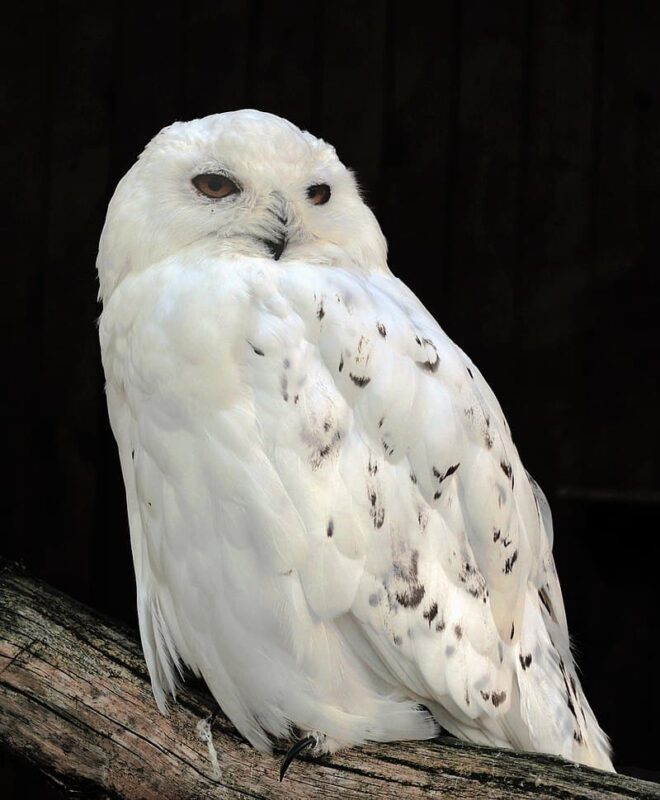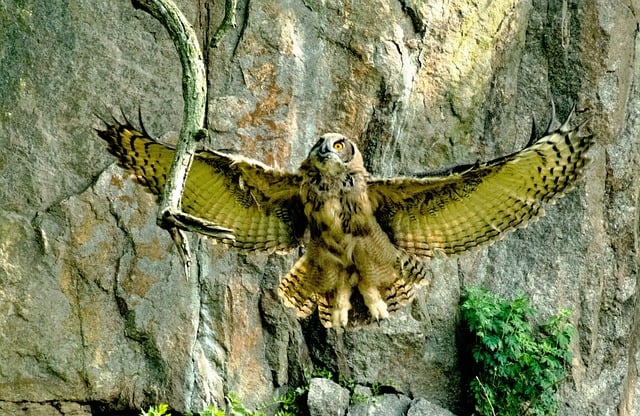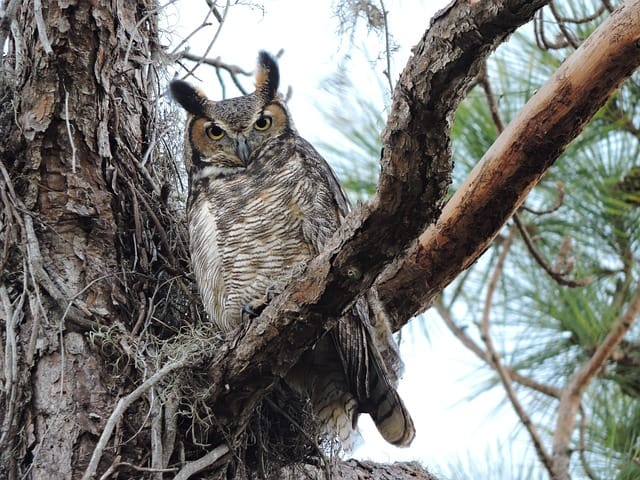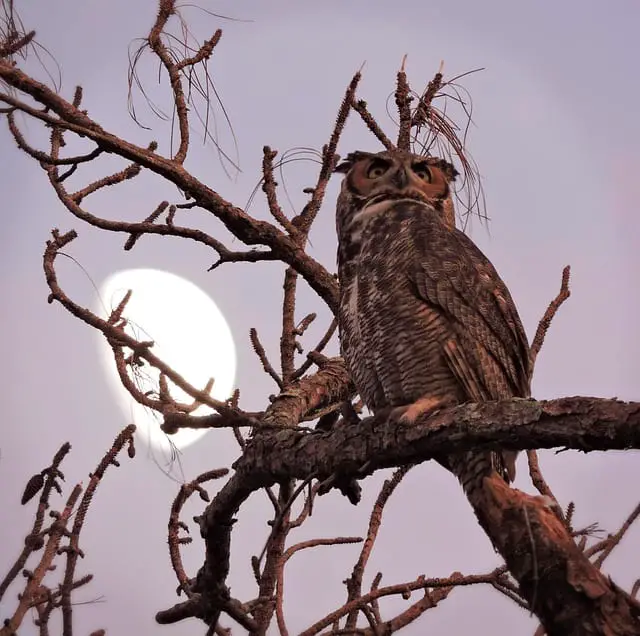The more we learn about the great horned owl, the more fascinating these large birds become. We know that they make their home across most of North America and parts of South America. We know that they hunt crows, though groups of crows are also hunting them. The great horns on their heads look like ears, but they aren’t used for hearing, and scientists still aren’t sure what the purpose of these horns actually is. And, while we know they have excellent gifts for hunting at night, they are sometimes spotted during daylight hours.
Do Great Horned Owls Hunt During the Day?
The best time for great horned owls to hunt is during the night. They do structure their lives around hunting as much as they can, and they are well-built with night vision to hunt in the dark. However, they are perfectly capable of hunting during the day. They are still strong predators in the light and will be seen in low light conditions fairly often. It’s not uncommon to spot a great horned owl during the early morning or evening hours.
Great horned owls prefer to hunt from a high perch and quickly fly down to catch their prey in their talons. They may eat close to where they hunted or may bring their food back to their nests to eat later. In winter conditions, great horned owls have been known to catch their prey, let the carcass freeze, and consume their catch later.
We don’t know all the reasons this large owl may choose to hunt during daylight hours. However, since we know that they structure their time around hunting, and they live in a wide variety of habitats and consume a wide variety of prey; many believe that the type of animal they are hunting is a large factor in their decision to hunt at different times. This behavior has been observed in other owl species as well.

Image by PublicDomainImages from Pixabay

Are There Other Owls That Hunt During The Day?
The northern pygmy owl will primarily hunt during the day. This isn’t because they’re necessarily built to hunt at that time, but because one of their primary food sources are songbirds, who are active and readily available during the daylight hours.
One of the more interesting examples is a close relative of the great horned owl (scientifically known as Bubo virginianus). The snowy owl (Bubo scandiacus) used to belong to its own genus. In 2004, they were renamed to reflect genetic evidence showing that they’re in the Bubo genus alongside the great horned owl. The snowy owl can frequently be found hunting during daylight hours. Like the northern pygmy owl and likely the great horned owl, they venture out during daylight hours not because it’s preferable but because conditions demand it. Snowy owls tend to live far north. They are sometimes called the Arctic Owl. They will build their nests in the tundra. They are often found in Canada or sometimes in the northern United States. These regions experience seasons of 24-hour days or nights, and the snowy owl has adjusted their habits accordingly to be able to hunt during daylight hours.
These examples of the northern pygmy owl and snowy owl show how adaptable these predators can be and provide us with more insight into the great horned owls’ motives for their own hunting behaviors.

What Makes Great Horned Owls Such Fierce Predators?
Great horned owls have great eyesight, even better hearing, powerful talons, and large wingspans of about 4.6 feet that enable them to fly quickly to their prey.
Thanks to their fringed wing feathers, great horned owls take to a silent flight once they spot their prey. This benefits them in two ways. For one thing, it means that the animal they’re hunting doesn’t hear their approach. Many animals never know what caused their end because they weren’t aware the great horned owl was even around. The second benefit is that it means the owls don’t lose track of their prey. Even if a mouse were to be on the move, the owl can quickly fly to their changing location all while keeping track of the mouse’s movements.
Great horned owls have what appear to be horns or even ears. These are actually just tufts of feathers. Scientists aren’t sure of their function. They give the birds a distinct look and contribute to their name, but that’s all we really know about them. These horns are officially called plumicorns. Their actual ears are hidden under feathers.
While their hearing is better than their eyesight, their eyesight is still very strong. Like many other types of owls, their large yellow eyes see better at night and are designed to help them catch small movements in the dark. However, they see well enough during the day to hunt whenever their chosen prey is at its weakest.
What Is The Great Horned Owl’s Diet?
Great horned owls weigh an average of three pounds. Based on this, most people would assume that they focus their hunting habits on small mammals. While they certainly eat a fair amount of small prey, they actually go after larger prey quite often. In fact, they will attack other animals that weigh up to 15 pounds.
For the most part, their food supply consists of mammals, though they notably will eat other birds, including other owls. The farther north they are, the more likely they are to eat other birds. Some of their more notable prey includes geese, osprey, red-tailed hawks, peregrine falcons, and other owls like barn owls, a barred owl, or eagle owl. Some of the small mammals in their diet include mice, rabbits, prairie dogs, opossums, skunks, and squirrels. Rats are a staple food for most great horned owls. They have been known to consume prey whole. While rare, great horned owls will also eat reptiles and fish. They can adapt to whatever their local environment has to offer as far as food supply goes. Some of their smaller prey include large insects, lizards, snakes, and scorpions.

Where Do Great Horned Owls Nest?
Great horned owls need to build their nests somewhere their young will be safe and where they will be able to take short flights to hunt for prey. With so few requirements, they’ve adapted to living in a lot of different environments, from forests to wetlands to suburban areas and city parks. While they will often build their own nests, they will also adopt nests built by other birds, sometimes only adding a few feathers of their own. They like to be fairly high up, anywhere from 20 to 60 feet above the ground. Some of their popular choices for nest sites include cliff ledges, hollow trees, and abandoned buildings.
The great horned owls’ breeding season is in the winter. They will mate in late January and February and lay their eggs in February through the end of March.
When young owls are only five weeks of age, they will start venturing out to climb on tree limbs and explore the area. They begin to fly at about 10 weeks old. During this time, they are fed and cared for by both the male and female owl.
You May See A Great Horned Owl Just About Anywhere
Great horned owls are beautiful and unique-looking birds. A lot of people would love the chance to spot one and wonder where they might go hiking in order to luck into such a sighting. Realistically, these large owls are so adaptable that you may see one pretty much anywhere in North America and parts of South America. They live in abandoned buildings in suburban areas and tree cavities in the forests. They are happy to make their homes in pretty much every habitat in the United States. That being said, they’re mostly solitary creatures, so it’s hard to say exactly where you can go to catch sight of one. Mostly, it’s going to be about luck.
Recent Posts
The only venomous snakes in Washington State are Northern Pacific Rattlesnakes. The Northern Pacific Rattlesnake (Crotalus oreganus oreganus) is a sub-species of the Western Rattlesnake. Anyone...
Skunks are not classified as true hibernators. But they go into a state of torpor when the weather gets cold. Skunks are light sleep hibernators, along with opossums, bears, and raccoons. ...

